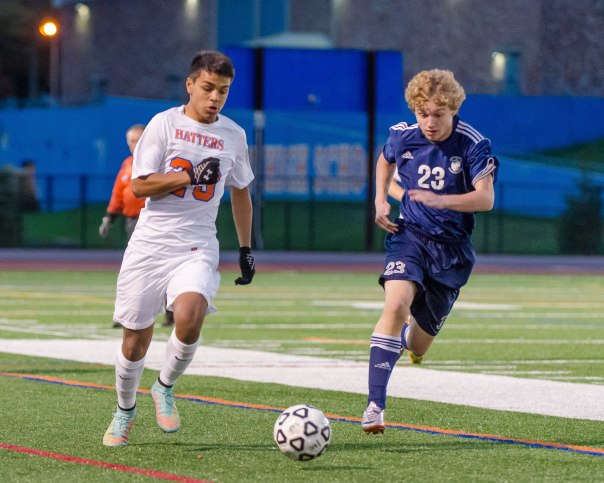I recently started shooting soccer games at night which has presented me with the most challenging photographic conditions I have ever faced. The limited stadium light combined with fast action was actually too much for my equipment to handle. I shoot with a Nikon d7000 and a 70-300 4.5-5.6 zoom, which even at ISO 2500, could not produce usable images. As the High School team that I have been documenting all season was heading into the playoffs, the games were being played at night so I either had to give up shooting the games or look to getting a faster lens. I looked into the various rental companies but even renting a lens is not cheap and I was not sure for how long I may need the lens so I was hesitant to go that route. I decided to let my Camera Club know of my dilemma and see if perhaps someone local would be willing to let me rent/borrow a suitable lens. As luck would have it, one of the members very graciously lent me her lens. This is no small favor in my mind as her lens is a Nikon 70-200 2.8 VR with a sticker price of $2400. I am extremely grateful (and careful) for the use of the lens.
Of-course, having capable equipment solved part of my problem but now it was up to me to learn how to get the shots I wanted. The 70-200 2.8 lens is heavy so I needed to adjust to that and the shallow depth of field demands spot on focussing. It is a lens that certainly requires some practice and initially made me feel as though I was brand new to photography.
In addition to having someone lend me their lens, the fact that I mentioned my situation to members of my photo club also gave me the benefit of a few people giving me tips and advice for the shooting conditions. For example, it was suggested that I set the camera to Auto ISO. I had just not thought to do so but as soon as it was mentioned I realized what perfect sense it made. As the lighting conditions tend to change from twilight to dark throughout the games, I was manually changing my ISO throughout. Auto ISO not only took care of that problem for me but by using Auto ISO the camera is choosing the best ISO more exactly that manually jumping from stop to stop does. For example, manually I have to jump from ISO 1250 to 1600 but if Auto ISO is set, the camera can choose say ISO 1400; full stops are not necessary in this mode.
Additional suggestions were also given to me- try spot metering, use Active D-Lighting, etc. In some cases, these suggestions were things I had not considered, not because I hadn’t heard of them but because they are techniques that I do not often use and, therefore, sometimes forget about. This gets to the importance of preparing before a new or difficult shoot. Take time to consider- what techniques and settings can I employ to increase my chance of success? DSLRs are really mini computers, and extremely powerful, if you take the time to learn how to fully use them. Jotting down a checklist of settings can be helpful as well as re-reading the camera’s manual. Things that made no sense to you at one time may prove very useful now.
Below are a few recent shots I have taken, and although I know I have a lot of room for improvement, at least I am getting usable images. I have also learned that I can push my ISO even higher than I thought I could.
Anytime you are going to be faced with a new set of conditions, take time to ask for help and prepare. If you don’t have the benefit of belonging to a Photo Club, search for related articles on the Web. You always want to give yourself the best chance to succeed.
What difficult conditions have you faced? How did you deal with them?
Happy shooting.



Great suggestion! Always enjoy your blog and help to the fullest!!!
LikeLike
Thanks for the support, Diane!
LikeLike